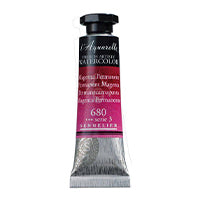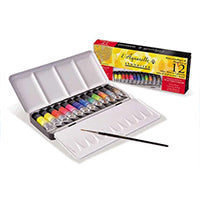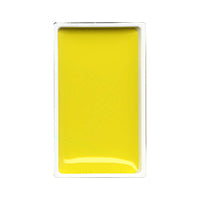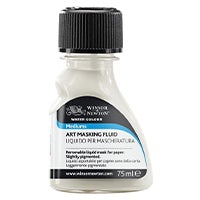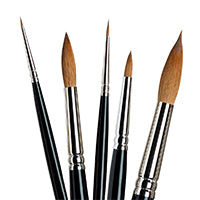Watercolour Painting
-
Original price $97.10 - Original price $97.10Original price$97.10$97.10 - $97.10Current price $97.10| /
ArtGraf Watersoluable Carbon Disc Earth Set
ArtGraf Watercolour Carbon Disk comes in the handy shape of an old-fashioned tailor's chalk. The tapered edges and rounded corners can be used for...
View full detailsOriginal price $97.10 - Original price $97.10Original price$97.10$97.10 - $97.10Current price $97.10| /
What is watercolour painting?
Watercolour painting is a type of painting that uses water-soluble pigments. The pigments are usually applied to paper, but can also be applied to other materials, such as fabric or wood.
What are the benefits of watercolour painting?
Watercolour painting has many benefits. It is a very versatile medium that can be used for a wide range of applications, from fine art to illustration. Watercolour paint is also very portable, making it a great option for painting on the go. Additionally, watercolour painting can be a very relaxing and therapeutic activity.
What surfaces can a watercolour painting be used on?
Watercolour painting can be used on a variety of surfaces, including paper, wood, and fabric. Each surface will react differently to the paint, so it is important to experiment with a variety of materials to find the one that best suits your needs.
How long does it take the watercolour painting to dry?
Watercolour paint dries relatively quickly, usually within a few minutes to an hour. However, the time it takes for the paint to completely dry will depend on the thickness of the paint and the type of paper being used. Thinner layers of watercolour paint will dry more quickly than thicker layers. Additionally, watercolour paint will take longer to dry on absorbent papers than on non-absorbent papers.
What is the difference between watercolour painting and acrylic painting?
Watercolour painting is typically more transparent than acrylic painting, meaning that the pigments are more evenly dispersed in the medium and light is able to pass through them more easily. This results in a painting that has a soft, delicate appearance.
What is the difference between watercolour painting and oil painting?
Watercolour painting uses water-soluble pigments and must be applied in thin layers. Oil painting, on the other hand, uses oils or oil-based mediums as binders for the pigment, allowing for thicker layers and more blending possibilities. Additionally, watercolour paintings have less drying time compared to oil paintings.
What are some things to avoid while using watercolour painting?
Some things to avoid while using watercolour painting include using too much water, using too much pressure, and using the wrong type of paper. Additionally, it is important to be aware of the drying time of watercolour paint, as overworking the paint can cause it to dry unevenly or become muddy.
What are some tips for watercolour painting?
Some tips for using watercolour painting include starting with light washes of colour and slowly building up to darker shades, using a variety of brush sizes to create different effects, and experimenting with different types of paper to see what results you can achieve. Watercolour painting can be a very rewarding experience, so don't be afraid to experiment and have fun!
What art supplies will I need when using watercolour painting?
When using watercolour painting, you will need some basic art supplies. These include watercolour paints, brushes, a palette, paper, and a container for water. You may also want to use a variety of other supplies, such as masking fluid, tape, and pencils, to help you create different effects.

